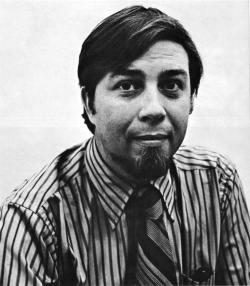Difference between revisions of "Jack Burnham"
| Line 28: | Line 28: | ||
* [[Media:Burnham_Jack_1980_Art_and_Technology_The_Panacea_That_Failed.pdf|"Art and Technology: The Panacea That Failed"]], in ''The Myths of Information'', edited by Kathleen Woodward, Coda Press, 1980. | * [[Media:Burnham_Jack_1980_Art_and_Technology_The_Panacea_That_Failed.pdf|"Art and Technology: The Panacea That Failed"]], in ''The Myths of Information'', edited by Kathleen Woodward, Coda Press, 1980. | ||
* [[Media:Burnham_Jack_The_Systems_Approach.pdf|'The Systems Approach"]], in ''Art as Inquiry'' by Margaretha J.M. Bijvoet, New York: Peter Lang, 1997, pp 67-74. | * [[Media:Burnham_Jack_The_Systems_Approach.pdf|'The Systems Approach"]], in ''Art as Inquiry'' by Margaretha J.M. Bijvoet, New York: Peter Lang, 1997, pp 67-74. | ||
| + | |||
| + | ; Interviews | ||
* [http://www.volny.cz/horvitz/burnham/lutz-interview.html Lutz Dammbeck interviews Jack Burnham]. | * [http://www.volny.cz/horvitz/burnham/lutz-interview.html Lutz Dammbeck interviews Jack Burnham]. | ||
| Line 34: | Line 36: | ||
* [http://web.archive.org/web/20101115151401/http://www.volny.cz/horvitz/burnham/homepage.html Page on Burnham by Robert Horvitz] | * [http://web.archive.org/web/20101115151401/http://www.volny.cz/horvitz/burnham/homepage.html Page on Burnham by Robert Horvitz] | ||
* [http://www.t-h-e-n-e-t.com/html/_film/pers/_pers_burnham.htm Page on Burnham by Lutz Dammbeck] | * [http://www.t-h-e-n-e-t.com/html/_film/pers/_pers_burnham.htm Page on Burnham by Lutz Dammbeck] | ||
| − | |||
| − | |||
Revision as of 10:52, 27 March 2014
 Photo from the Software catalogue, 1970. | |
| Born |
November 13, 1931 New York City, New York |
|---|---|
Jack Wesley Burnham Jr. was born 1931 in New York City and grew up in Quincy, Massachusetts. He studied at the Boston Museum School and the Wentworth Institute before graduating from the Yale School of Art with a BFA in 1959 and an MFA in 1961. From 1956 to 1968, he worked intermittently as a signpainter and draftsman, but sculpture was his main focus, often including light (incandescent bulbs, neon, etc.; a photo of a ceiling-mounted piece from 1968, made of electro-luminescent tape and aluminum channels, appears in Beyond Modern Sculpture). He was a Fellow at MIT's Center for Advanced Visual Studies in 1968-9 and won a Guggenheim Fellowship in 1973-4 to work on a book about Marcel Duchamp.
His first book, Beyond Modern Sculpture: The Effects of Science and Technology on the Sculpture of Our Time, 1968, established him as the pre-eminent champion of art and technology of his generation. Building on this foundation, his second book, The Structure of Art, 1971, developed one of the first systematic methods for applying structural analysis to the interpretation of individual artworks as well as to the canon of western art history itself. In his articles "Systems Esthetics" (1968) and "Real Time Systems" (1969), Burnham already explored a systems approach to art: "A systems viewpoint is focused on the creation of stable, ongoing relationships between organic and non-organic systems". Many of his articles for Arts Magazine from 1968-70, where he was Associate Editor (1972-76) and Artforum from 1971-3, where he was Contributing Editor (1971-2), were collected in his third book, The Great Western Salt Works, 1973. These essays still remain amongst the most insightful commentaries on conceptual art, already suggesting what he now sees in retrospect as the "great hiatus between standard modernism and postmodernism".
In 1970, at the invitation of Jewish Museum director, Karl Katz, Burnham curated Software - Information Technology: Its New Meaning for Art, the only major show he has curated to date. In contrast to the numerous art and technology exhibitions which took place between 1966-1972, and which focused on the aesthetic applications of technological apparatus, Software was predicated on the ideas of "software" and "information technology" as metaphors for art. He conceived of "software" as parallel to the aesthetic principles, concepts, or programs that underlie the formal embodiment of the actual art objects, which in turn parallel "hardware". In this regard, he interpreted "Post-Formalist Art" (his term referring to experimental art practices including performance, interactive art, and especially conceptual art) as predominantly concerned with the software aspect of aesthetic production.
During his most prolific period as a writer, he taught art history at Northwestern University in Illinois, eventually becoming chairman of the art department in 1976. Later he taught at the University of California at San Diego, the School of the Art Institute of Chicago, Colgate University, and Williams College. In the 1980s he moved to the University of Maryland (College Park campus) and again chaired the art and art history departments. Now retired, he lives in Hyattsville, Maryland, immersed in Kabbalah.
Literature
- Books by Burnham
- Beyond Modern Sculpture: The Effects of Science and Technology on the Sculpture of This Century, New York: George Braziller, 1968, 416 pp.
- Structure of Art, 1971.
- The Great Western Salt Works, 1973.
- Articles by Burnham
- "Systems Esthetics", Artforum 7:1 (September 1968), pp 30-35. Reprint.
- "Real Time Systems", Artforum Vol. 8, No. 1 (September 1969) p. 49-55. Reprinted in Great Western Salt Works.
- "Duchamp's Bride Stripped Bare: The Meaning of the Large Glass", Arts Magazine, March-May 1972. Large Glass (1915-22) served as an architectural model for the installation of Burnham's exhibition Software.
- "Art and Technology: The Panacea That Failed", in The Myths of Information, edited by Kathleen Woodward, Coda Press, 1980.
- 'The Systems Approach", in Art as Inquiry by Margaretha J.M. Bijvoet, New York: Peter Lang, 1997, pp 67-74.
- Interviews